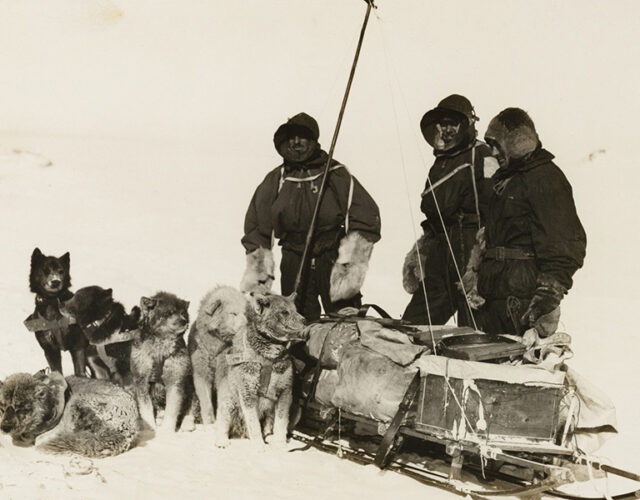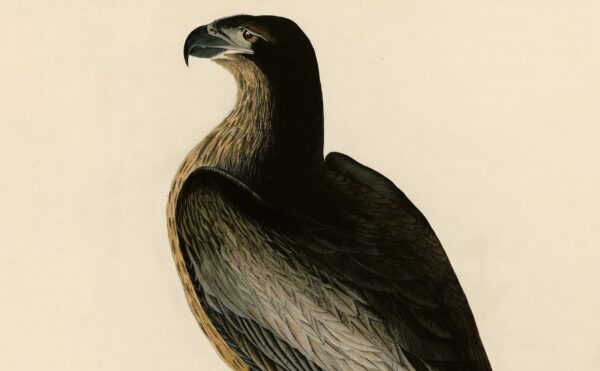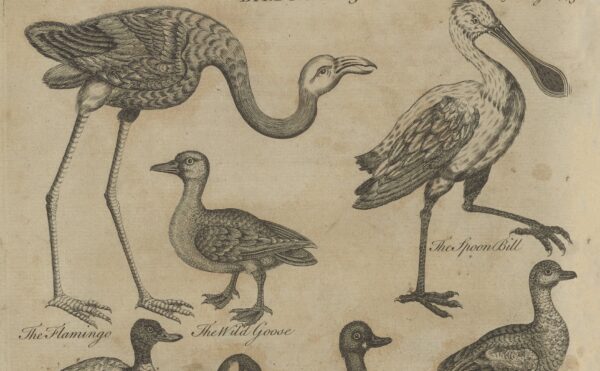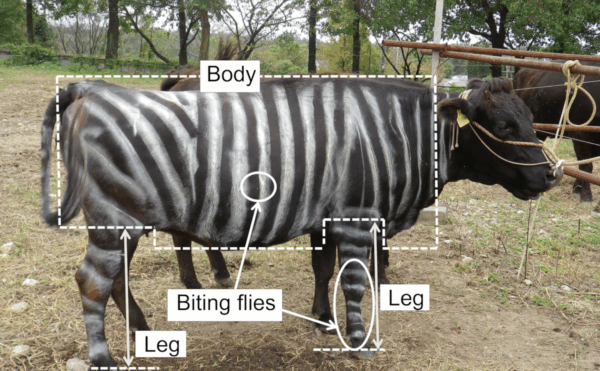Native people in Siberia, Alaska, and northern Canada avoid eating polar bear liver and seal liver. It is considered taboo. But when European explorers started going into those areas in the early 1900s, they soon learned there’s real wisdom in taboos sometimes.
About The Disappearing Spoon
The Science History Institute has teamed up with New York Times best-selling author Sam Kean to bring a second history of science podcast to our listeners. The Disappearing Spoon tells little-known stories from our scientific past—from the shocking way the smallpox vaccine was transported around the world to why we don’t have a birth control pill for men. These topsy-turvy science tales, some of which have never made it into history books, are surprisingly powerful and insightful.
Credits
Host: Sam Kean
Senior Producer: Mariel Carr
Producer: Rigoberto Hernandez
Associate Producer: Padmini Raghunath
Audio Engineer: Jonathan Pfeffer
Transcript
It was the worst month of Douglas Mawson’s life. He’d lost 19 sled dogs so far—as well as two close friends, men he’d been to the ends of the world with. It was January 1913, and he was staggering alone on the open ice of Antarctica. The sun was glaring into his eyes 24 hours straight, blinding him day after day after day. And he was still nowhere near the rescue point.
Given how numb he was, Mawson had barely noticed at first that his feet felt “lumpy and sore.” Then they started squished each step, like rain-soaked boots.
Finally, the pain grew too acute to endure. So he sat down on the ice, peeled off six layers of socks—and watched the soles of his feet peel off with them. The skin there simply came apart at the seams—leaving the soles dangling like something you’d fry up in a pan.
Pretty soon, the skin on his ears also flaked off—in casts, like the molted skin of a lizard. Even worse, his testicles and penis began shedding skin, right down to the raw, red epidermis.
Mawson didn’t know it—he was an explorer and a geologist, not a biologist. But the reason for his peeling feet and ears could be traced to his diet. In particular, to a revolt in his cells for consuming too much vitamin A.
<INTRO>
Douglas Mawson’s team was one of four scientific units exploring Antarctica that season, starting in November 1912. Most of the men were Australian, including Mawson himself.
At age 30, Mawson had a sharp, smooth face, although he grew a beard in Antarctica. He commanded three sledges, nineteen huskies, and two other men.
One man was British army lieutenant Belgrave Ninnis. Ninnis was 24, although he looked about 12. In pictures, his blond hair was plastered down as if his mother had just parted it—then he’d mussed it up when she wasn’t looking.
The other explorer was Swiss ski champion Xavier Mertz, age 29, who had a dashing black mustache.
Mawson’s team was exploring the Antarctic coast. And within a few days of setting off, they were in trouble. For starters, they stumbled into the single windiest corridor on earth, with gusts topping 200 mph. To make headway when walking, they had to lean forward at 45° angles.
Beyond the horrendous wind, the three explorers ran into endless ridges of ice, which hobbled their hopes of smooth sledding. Scarily, as they mushed along, they sometimes heard avalanches rumbling in the weak ice beneath their feet, tumbling into unseen chasms. The baby-faced Ninnis even slipped into a crevasse once before climbing back out.
Still, the team cruised through 315 miles in the first 30 days, making maps and meteorological observations.
On December 14th, the three men got strung out. Mertz went off ahead, skiing. Mawson had one sledge and six dogs with him. He took a longitude and latitude reading from the sun at noon, then went to catch Mertz. Ninnis lagged behind with the other two sledges and most of the supplies, including food and fuel.
Ninnis was traveling in back so that if the ground suddenly opened up and Mawson in front of him went down, the most valuable supplies—the food and fuel—would be safe. Unfortunately, Ninnis decided to break protocol that day. Instead of skiing, which spread his weight out over the whole ski, he decided to trudge alongside his sledge in boots.
It proved a fatal mistake. While Mawson and his skis slipped right over one hidden chasm, the concentrated weight of Ninnis’s footsteps punctured the ice roof. The whole shebang—dogs, supplies, and Ninnis himself—went down.
With a big wooly hat on, and with the wind howling around him, Mawson heard nothing of this—not even Ninnis’s scream. He just kept skiing, and caught up to Mertz ahead.
But after waiting around awhile for Ninnis, Mawson and Mertz got worried. They doubled back, and to their horror, found an open gaping pit, eleven feet wide. It was effectively bottomless, with sheer ice walls.
Squinting, they could see food lying on a ledge 150 feet down—as well as a single dog. It stopped whimpering within a few minutes. They were no other supplies in sight—and no sign of Ninnis. Mertz and Mawson called and called, hollering themselves hoarse. Finally, at 9pm, they read a burial service.
Some historians have actually blamed Mawson for Ninnis’s death. As team leader, it was his job to enforce the rules. And allowing Ninnis to walk in boots was certainly a blunder.
Unfortunately, Mawson then made another mistake. With no fuel or food, he and Mertz had no choice but return to the scientific base camp, 320 miles away. They had two possible routes.
One route would take them along the coast. This path would be rugged and laborious, but it was well stocked with fish and penguins to eat. The other route was more direct—but straight across the mainland. It was shorter, but lacked food.
Mawson chose to cut straight back. So how would he and Mertz eat? That’s where Mawson made his mistake, a mistake involving vitamin A.
Despite the singular name, vitamin A refers to several related molecules with slightly different structures.
Animals store vitamin A in our livers, and we use it in a dizzying array of processes, everything from building the fetal brain to keeping our eyesight sharp. Those of you who listened to my episode on the male birth control pill might recall that one form of vitamin A, called retinol, is vital for sperm production.
Vitamin A also helps produce skin cells—as well as the blubber cells that seals and polar bears need to keep warm in extreme cold. Vitamin A essentially works as a growth hormone inside those cells, spurring the production of more and more blubber.
But however important vitamin A is, you can always have too much of a good thing. Most vitamins that we eat are water-soluble. Just like sugar or salt, they dissolve in water. So if you consume too much of those vitamins, you can pee them out in your urine. No harm done.
Vitamin A is different. Vitamin A does not dissolve in water. That means that you cannot pee it out. Instead, your body has to rely on specific enzymes to break vitamin A down.
Unfortunately, if you ingest too much vitamin A, those enzymes get overwhelmed and can’t break it down fast enough. The result is vitamin A poisoning—called hypervitaminosis A.
We know about hypervitaminosis A mostly because of European polar explorers. A minute ago I mentioned that animals store vitamin A in their livers. That’s especially true for seals and polar bears that have blubber. They have astronomical amounts of vitamin A in their livers.
Native people in Siberia and Alaska and northern Canada avoided eating polar bear liver and seal liver for this very reason. The livers were taboo.
But when Europeans started pushing into those areas, they thought those taboos were hogwash. To them, it was all a silly superstition, about on par with worshipping trees. So whenever these European explorers made polar bear stew, they chopped up the rich, purple liver and tossed it into the pot.
They soon learned the hard way that there’s real wisdom in taboos sometimes. Because whenever they ate polar bear liver, things went bad very quickly.
Inside their bodies, their enzymes tried desperately to break all the vitamin A down. But the enzymes quickly got overwhelmed. As a result one form of vitamin A, called retinol, begins circulating in the blood. And free retinol in the blood is bad, bad news.
Our body cells are surrounded by oil-based membranes. Retinol essentially acts as a detergent and breaks those oily membranes down. As a result, the guts of the explorers’ cells started spilling out.
Inside their skulls, this led to huge buildups of fluid. Massive, crushing headaches followed, as well as vertigo. People vomited repeatedly, and some showed signs of psychosis.
But the real horror—the stuff of nightmares—involved the skin. Excess vitamin A kills skin cells. In fact, eating just one ounce of polar bear liver can kill so many skin cells, that your skin starts coming off in sheets.
Imagine that. Your skin just peeling off your arms, your chest, your face. Your raw flesh exposed to the world. I can’t imagine a worse way to die. All from eating a little polar bear liver.
Now, what does this all have to do with Douglas Mawson? Well, other cold-weather animals besides polar bears and seals have high levels of vitamin A. Including reindeer, sharks, foxes—and arctic huskies.
Again, when Ninnis fell down the crevice with their food, Mawson decided that he and Mertz would not hug the coast and hunt for penguins or go fishing. Instead, they would cut straight through the mainland. And their main source of food would be their dogs.
<AD BREAK>
As Mawson and Mertz traveled along, they started feeding their dogs extra boots and clothes, anything to fill their bellies. But the dogs were loyal. They kept pulling and pulling and pulling without losing an ounce of vigor—until they eventually collapsed.
George was the first dog to die. Mawson and Mertz fed part of him to the other dogs, who happily devoured him. Unlike humans, dogs aren’t sentimental.
Crucially, though, while Mawson and Mertz let the other dogs eat George’s muscles, they reserved for themselves the rich, soft inner organs—including the liver.
After they ate George, the journey continued. The dog Johnson fell next, then Mary. Mawson and Mertz found the flesh tough and stringy, but swallowed every scrap. They even boiled the dogs’ paws into a jelly.
Both men of course hated eating their loyal dogs, and they suffered severe stomach cramps. But the dog meat proved especially hard on Mertz. He had been a near vegetarian before. He was also the dogs’ caretaker, and every bite was mental anguish.
But he had no choice. Soon Pavlova and Ginger collapsed, then Haldane, the last one. Mertz and Mawson ate every one, including their organs. As Mawson recorded in his journal, “It was a happy relief when the liver appeared; even if little else could be said for its flavor, it was easily chewed and demolished.”
After this, the duo had to pull the sledge themselves. But that wasn’t the worst of their burdens. Because deep inside them, vitamin A was wreaking havoc on their cells. Now, some people are more susceptible to hypervitaminosis A poisoning than others. And two weeks into this diet, right around New Year’s Day, Mawson noticed Mertz looking “off-colour” and acting strange.
Some days Mertz refused to leave his sleeping bag, unwilling to even make a little progress. Other times, he’d grow furious, raving and flailing about, nearly destroying their tent.
Perhaps worst of all, Mertz’s skin began peeling off. And before long, trapped on the infinite white void of Antarctica, Mertz lost contact with this world altogether. Once, to test whether his fingers were frostbitten, Mertz put the pinky of his left hand into his mouth, and bit down. Mawson watched in horror as he coughed up the severed tip.
Not long after, Mertz fouled his bed one morning. Mawson cleaned him up and tucked him back in like a child. But despite his care, Mertz died that night, January 8th.
Alone now, Mawson prepared to soldier on. To reduce weight, he sawed the last sledge in half with a penknife, and threw away every extra ounce he was carrying, even the blank pages in his diary. Then he buried Mertz in the sleeping bag he’d so often refused to leave.
At least that’s what Mawson claimed. Some historians have questioned whether Mawson might have been desperate enough to eat Mertz. Those who knew Mawson swear it’s inconceivable.
But to be frank, Mawson might have been better off if he had eaten his colleague. Instead, he continued to eat dog meat they’d been saving and rationing, including the liver, oblivious that it was probably weakening him.
Mawson too had peeling skin by now. But he did not notice that the soles of his feet had detached until January 11th. Incredibly, he simply buttered his feet up with lanolin oil, tied the dead soles back on with bandages, and laced his boots up to keep marching.
Some days, like January 15th, he managed only one mile. January 15th was also the day that his ride home, the ship Aurora, was scheduled to depart the base camp for Australia. He was still eighty of the longest miles on earth away.
Then, on January 17th, disaster struck. While dragging his sledge, a crevasse suddenly opened up beneath his feet. Like Ninnis before, he began plunging straight down.
Miraculously, a rope ladder tied to his body saved him. It was attached to the sledge that remained above on the surface. But that was the only good news. Mawson found himself dangling over the abyss, looking straight down. He spent the next four hours struggling up to the lip of the crevasse. At which point he slipped and fell right back in.
Dangling once again, Mawson debated hard about ending things. If he just cut the rope, it would be an honorable suicide. Or he could climb back out and face god knows what else.
Somehow, though, he found the strength. He dragged his dead weight up the rope all over again. And this time he crawled to safety. He celebrated his survival with what he called an “orgy” of dog meat.
Two more desperate weeks passed. Finally, in early February, Mawson spotted something black on the ice ahead of him. It looked like a mirage, but he staggered toward it. It was a black blanket. And beneath, was a pile of food—food laid just hours before by a rescue party searching for him and his companions.
Mawson devoured the food and recuperated for a few days at a nearby cave—a hollow they’d whimsically named Aladdin’s cave on the journey out. It didn’t seem so funny now. Finally, on February 8th, Mawson crept down into the valley of the base camp—just in time to see the Aurora, the rescue ship, sailing off.
But then Mawson noticed something. At one of the huts of the base camp, there were signs of life. A half-dozen men had stayed behind, just in case Mawson or someone else stumbled in. And they were now rushing toward him. He was saved.
But just barely. He weighed only 112 pounds, having lost 100 pounds on the journey. The first man to reach him knocked a mask of ice off his face—and could only stare. “My god,” he finally said. “Which one are you?”
At the camp, they tried recalling the Aurora with a radio. But the arrival of harsh weather would not permit a return. No more ships were coming for the season, and Mawson would now have to spend the winter in Antarctica, in 24-hour darkness.
But compared to what he’d endured from vitamin A poisoning, six months of darkness was nothing. On a regular diet again, Mawson’s skin healed up, and later that year he returned to Australia and was knighted.
One historian later called his journey, “the greatest and most consummate expedition that ever sailed to Antarctica.” And it was almost all undone, by a little biochemical quirk, in the livers of his ever-loyal dogs.




